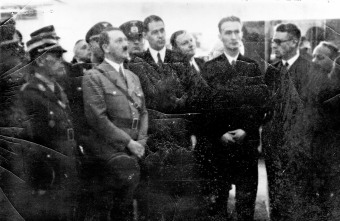Cooperation between I.G. Farben and the Nazi Regime

© National Archives, Washington, DC
With the NSDAP’s assumption of power in 1933, I.G. Farbenindustrie AG, like every other firm in Germany, faced the question of how to position itself vis-à-vis this new government. In the 12 years of the “Third Reich,” the posture of I.G. Farben was characterized by swift adaptation to the political parameters inside Germany (such as the firing of Jewish employees and the setting of war production as a top priority) and by active participation in shaping National Socialist policies domestically and abroad (such as the appropriation of related enterprises in the conquered territories and the massive employment of forced laborers).
















